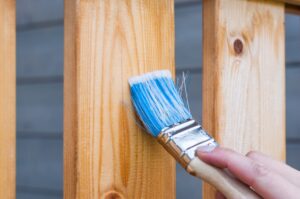Furniture holds a special place in our homes, and over time, it may start to show signs of wear and tear. Instead of discarding your beloved pieces, why not consider restoring and repairing them? Not only does this save money, but it also allows you to preserve memories and reduce waste. In this blog, we will provide you with valuable tips on how to restore and repair your furniture, giving it a new lease on life.

1-Assess the Damage:
The first step in restoring furniture is to evaluate the extent of the damage. Identify any loose joints, scratches, dents, or chipped paint. Understanding the problems will help determine the tools, materials, and techniques needed for repair.
2-Clean and Prepare:
Before proceeding with any restoration work, clean the furniture thoroughly using mild soap and water. Remove dirt, grime, and old finishes gently to avoid causing further harm. After cleaning, let the furniture dry completely.

3-Repair Loose Joints:
One common issue with furniture is loose joints. Apply carpenter’s glue or wood adhesive to reattach the parts. Clamp them together tightly, ensuring a firm bond. Allow sufficient drying time before removing the clamps.
4-Restore the Finish:
To rejuvenate the appearance of your furniture, you may need to restore its finish. Start by sanding the surface with fine-grit sandpaper to remove any old paint, varnish, or stain. Sanding also helps smooth out any imperfections. Once sanded, wipe away the dust, and choose an appropriate finish such as paint, varnish, or stain. Apply multiple thin coats, allowing each coat to dry before proceeding.

5- Fix Surface Scratches and Dents:
For minor scratches, use a touch-up marker or wax stick in a matching color to fill in the damaged area. Gently buff the surface with a soft cloth to blend the repaired area with the surrounding finish. For deeper scratches or dents, consider using wood filler. Apply the filler, let it dry, and sand it lightly before finishing.
6-Upholstery Repair:
For upholstered furniture, torn or worn fabric can be distressing. You can repair or replace upholstery by stitching tears or patching with a matching piece of fabric. If the upholstery is beyond repair, you might consider hiring a professional upholsterer to make it look as good as new.

7-Polish and Protect:
Once you’ve completed the restoration process, apply a suitable polish or protective coating to help maintain the furniture’s condition. Be sure to choose a product that is appropriate for the material and finish. Regularly dust and polish the furniture to prevent deterioration and maintain its shine.
Conclusion:
Restoring and repairing furniture allows you to breathe new life into cherished pieces while minimizing waste. By following these tips, you can revitalize your furniture and unleash your creativity. Remember, the key to successful restoration is patience.










